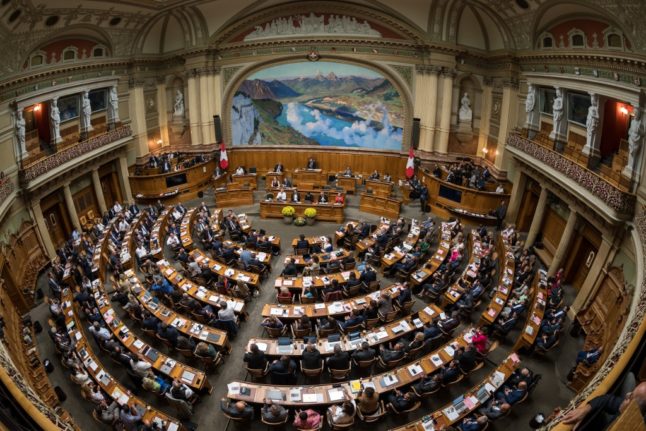Racist graffiti and slogans appeared at the university’s multicultural Hönggerberg campus on the outskirts of Zurich.
The words “No Asians” were written on a lift door, while photos of Asian students were crossed out in a photo.
In other instances, the work of Asian students was covered with obscene drawings and racist slogans while the students were not at their desks.
Read also: ‘Go back to Africa’ – reports of racism hit record high in Switzerland
Students at the university were split on how to react, with some calling for the culprit to be kicked out of the institution and others saying the racist insults should be ignored, according to Swiss daily NZZ.
Finally, a number of students went to the police, others approached internal ETH contact points and there were even rumours that the Chinese embassy had been called on.
The ETH response came from the highest levels. Students were invited to a closed meeting in which university vice-chancellor Sarah Springman warned that people who did not comply with the institution’s culture of respect would face punishment.
The university told the NZZ that the variety of different cultures at the ETH was both a strength and a challenge for the institution.
“Every year, the ETH welcomes a lot of new people, including students and those doing their doctorates, who have not yet taken on the ETH culture,” the university said.
A new ETH code of conduct stresses that discrimination, sexual harassment, bullying and threats of any sort will not be tolerated.
The racist slogans have now disappeared from the ETH’s Hönggerberg campus and most students are happy with the action taken by the administration to tackle the problem, although some say the response was too slow.
However, the NZZ said there was still a certain potential for conflict, citing comments from students about a growing number of Chinese residents in student homes at the campus. The study room in one of the buildings is apparently known as “Chinatown”, according to the daily.
But one doctoral student from Luxembourg put the issue in perspective. He said that anyone moving to the ETH knew they would find themselves in an international environment. “If they don’t like, they shouldn’t come here,” he said.
He noted that while life in the large student dwellings was not without problems, these was no excuse for racism.
“I’m not angry,” said one Chinese student. “It’s just a bit of shame to have such childish idiots as neighbours.”
Read also: Racism in Switzerland – ‘People of colour are automatically perceived as different’



 Please whitelist us to continue reading.
Please whitelist us to continue reading.